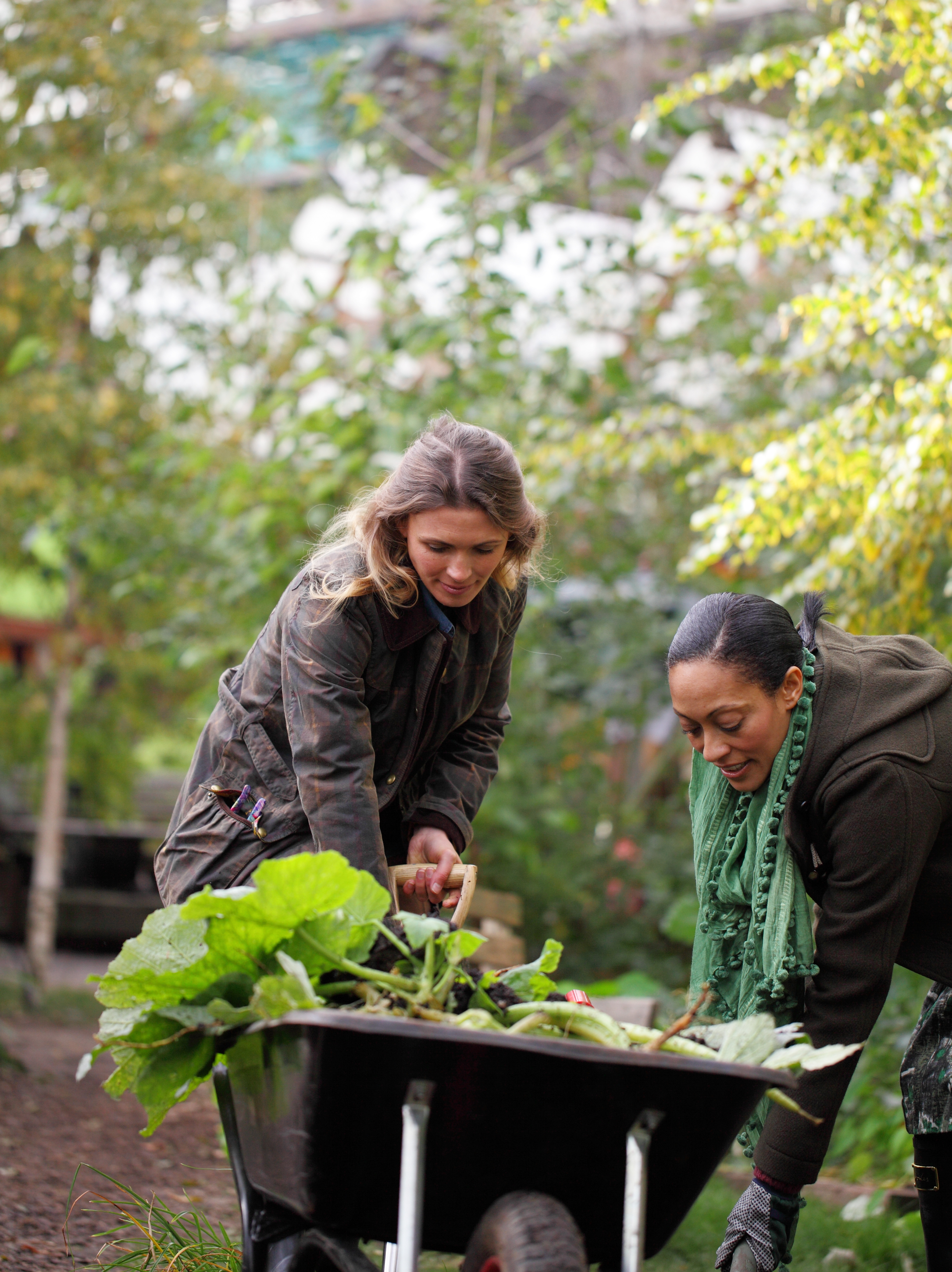Fall cleanup and putting your garden to bed

During the fall months there are several steps recommended by the Ramsey County Master Gardeners to take to get your garden ready for next spring.
Step 1: Clean up leftover plant matter
Unwanted vegetables can be chopped and tilled in or composted at the end of the season. Be careful to remove diseased plant material. Either bury it away from the garden, burn it or dispose of it. Do not leave diseased plant material in the garden if possible because plant disease pathogens living on those plants can cause future disease problems next year.
If you must leave plant matter in the garden, avoid planting that same type of vegetable in the garden for the next three years. For more information, read this article.
If the plants seem healthy (not showing any disease symptoms), they can either be tilled into the garden, chipped and spread on the garden surface, or composted. Large fruit still on the plant, like squash or watermelon that was never picked, can either be chopped finely and tilled into the soil, or removed.
Step 2: Do a soil test
The University of Minnesota Soil Testing Laboratory is a great local resource for testing your soil. Testing the soil can help you make the most of the growing season. Vegetables remove a lot of nutrients from the soil because they require a lot of nutrients to produce big healthy fruits like peppers and pumpkins. Over time, garden soil may become depleted in some nutrients that plants need.
Soil tests tells you if your soil has problems like low nutrient levels, low organic matter or high pH that could limit your vegetable growth next year. The test results will also give clear instructions on what to do to fix any problems your soil may have.
Fall is a great time to do a soil test. Doing it now allows plenty of time to apply any necessary amendments (like compost, manure, or granular fertilizer) to the garden either this fall or next spring, so that your garden is prepared for success next year.
Step 3: Amend your soil
Gardeners have many choices when it comes to soil amendments (additives) for vegetable gardens, including granular fertilizer, manure and compost.
Granular fertilizers are a great way to fill needs revealed by the soil test. They have set concentrations of nutrients, and these concentrations are indicated on the label of the product. Your soil test report will tell you what concentration is recommended for your garden.
If you apply manure to your vegetable garden, it is a good idea to do that in the fall. Learn more about proper and safe use of manure.
Compost can be used for all kinds of garden beds. The compost remains on the surface and is not mixed into the soil. Much like other mulches, compost mulch prevents weeds from sprouting, soil-borne plant infections, and keeps soil moist. It also helps moderate changing temperatures.
All of this makes it easier for plants to grow in your garden’s soil. Over time, the compost will become incorporated with the soil below, ultimately providing the same nutrition and soil benefits as compost that has been tilled into the garden bed.
To use compost as a garden mulch, lay 3-6 inches of compost on top of the soil in an existing garden bed.
Step 4: Manage weeds
The two major goals in the fall are to remove any leftover mature weeds and to control winter annual weeds that started coming up in September.
Weeds that slipped between the cracks and grew to maturity through the season now have seeds on them. Many of our common weed species can produce anywhere between 1,000-600,000 seeds per plant. Letting those seeds drop to the garden soil will lead to future weed growth.
Remove those mature weeds as soon as possible and dispose of them or bury them far away from your garden.
Winter annual weeds emerge in the fall (August-October), survive the winter, and continue growing in the spring. Controlling them in the fall will lead to less weedy soil in the spring. Manage winter annuals with straw, hand-pulling, and gentle raking of the soil surface.
Step 5: Till...or maybe not?
Tilling your vegetable garden in the fall may not be necessary. Many gardeners may till or hoe in the fall with the best intentions, but it could disturb the soil structure and organisms living there. This could make the soil more likely to erode.
Tilling (or hoeing) is used to mix in soil amendments (additives) and leftover plants, kill weeds, and break up large soil clumps. If you are not blending in any soil amendments, you may want to skip tilling this fall. Weeds can be managed by hand-pulling, covering the soil with straw to suppress new weeds, or raking the surface to remove small weed seedlings.
Step 6: Put down straw
Many gardeners spread straw on their gardens once everything is ready for winter. Straw can reduce the growth of winter annual weeds (fall-emerging) and early spring weeds.
During warmer fall or spring periods, straw might help protect the soil from erosion caused by rain or run-off.
Step 7: Think of the pollinators
Many birds, native pollinators and other wildlife need the plants in our landscapes to survive the winter. While it is important to remove diseased plant material from the yard and garden to reduce plant pathogens, it is also important to leave healthy flower stalks, seed heads, grasses, fallen leaves and other plant parts in the garden to support Minnesota’s pollinators and wildlife.
Tree leaves can be placed on the soil of a vegetable garden to prevent soil erosion over winter and provide shelter to native pollinators. Learn more about Fall Cleanup for Pollinators.
Find additional tips for care and maintenance of gardens on the University of Minnesota Extension website, using the “Search Extension” feature.